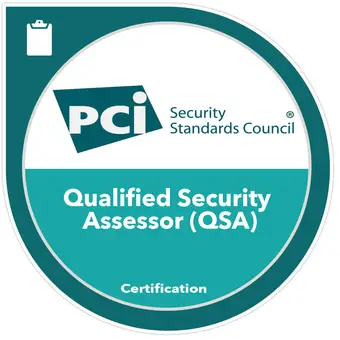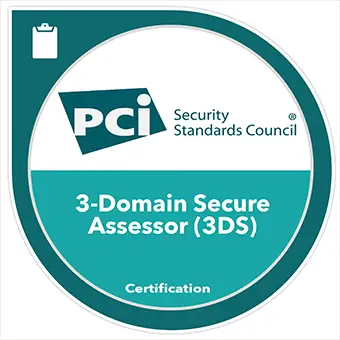Cianaa is officially authorized for PCI DSS (Payment Card Industry Data Security Standard) and 3D Secure (3DS) compliance—ensuring your business meets the highest standards in payment security, fraud prevention, and data protection.
You are welcome to verify from PCI Council Website.
Cianaa is a certified QSAC accredited by the PCI Security Standards Council.
Cianaa Technologies has been a trusted PCI DSS QSA accredited organization since 2014, delivering over a decade of proven expertise in payment security and compliance in New Zealand, Australia and Worldwide.
Cianaa Technologies is a globally recognized PCI 3DS Assessor, helping organizations implement and secure EMV® 3-D Secure technologies such as Access Control Server (ACS), Directory Server (DS), and 3DS Server (3DSS)


The Payment Card Industry Data Security Standard (PCI DSS) was established in 2004 by major credit card companies: Visa, MasterCard, American Express, Discover, and JCB. The aim was to combat rising threats of payment card fraud and data breaches. Managed by the PCI Security Standards Council, PCI DSS provides a unified framework of security requirements for organizations that store, process, or transmit cardholder data. Today, PCI DSS compliance is a global benchmark for data protection and a critical component of trust in digital transaction.
PCI DSS (Payment Card Industry Data Security Standard) compliance refers to a set of security requirements designed to protect cardholder data during storage, processing, and transmission. It applies to any organization that handles credit or debit card transactions, including merchants, service providers, and financial institutions.
Establish robust network security controls and enforce secure configurations to segment and harden the CDE—blocking untrusted traffic and reducing attack surface.
Maps to Requirements: 1–2
Safeguard stored account data with encryption or keyed hashing, and protect data in transit with strong cryptography; limit retention and restrict display/copy of PAN.
Maps to Requirements: 3–4
Prevent, detect, and remediate threats via anti‑malware and anti‑phishing, secure development, timely patching, and protections for public web apps.
Maps to Requirements: 5–6
Enforce least‑privilege, require MFA for in‑scope access, and restrict physical access to systems and media that store or process CHD.
Maps to Requirements: 7–9
Centralize and automate log monitoring, perform vulnerability scans & penetration tests, and deploy tamper/change detection for payment pages.
Maps to Requirements: 10–11
Sustain a living security policy & governance program—training, third‑party oversight, risk assessments, and incident response—to ensure continuous compliance.
Maps to Requirements: 12
PCI DSS is framework of security controls that helping businesses safeguard cardholder information from unauthorized access, data breaches, and cyberattacks.
Non-compliance can lead to fines, legal consequences, and loss of payment privileges.
PCI DSS compliance helps reduce these risks by enforcing best practices in data security.
By achieving PCI DSS compliance means a signal of powerful trust and business growth in global market.

Cianaa implements a multi-audit strategy that can dramatically lower costs for customers by streamlining resources and eliminating redundant processes. By consolidating multiple audits into a single, integrated effort, organizations can:
The Self-Assessment Questionnaire (SAQ) is a tool designed to help merchants assess their compliance with PCI DSS standards. It’s important to understand which type of SAQ fits your business model and transaction method. Each type caters to different categories of merchants based on how they handle payment transactions.
All level 2 (less then 6 million transactions per year) and below Merchants are required to fill SAQ. Service Provider level 2 are required to fill SAQ.When determining the appropriate SAQ, consider factors such as the volume of transactions, the methods of payment, and how you store customer data. Understanding these elements will guide you in choosing the correct SAQ that ensures you’re compliant without unnecessary stress.
Choosing the wrong SAQ can invalidate compliance. Always confirm eligibility with your acquirer or Cianaa QSA.Quick rule of thumb: If you electronically store cardholder data or your setup doesn’t meet another SAQ’s strict eligibility criteria, you will default to SAQ D (Merchant or Service Provider).
The goal of completing your SAQ is to keep your payment processes secure. By understanding the different types of SAQs and their requirements, you can effectively protect your customers’ information and maintain trust in your business.
An SAQ type refers to the specific version of the Self-Assessment Questionnaire that a merchant or service provider must complete to validate their PCI DSS compliance.
Each SAQ type is designed for a different business scenario, based on:
For example:
Taking the time to identify the right SAQ can alleviate a lot of hassle down the line. Make your decision with care and be proactive in your approach to compliance.
.
New Payment Channels
If you add e-commerce, mobile payments, or card-present terminals, your SAQ type may change (e.g., from SAQ A to SAQ A-EP or SAQ C).
Switching Service Providers
If you move to a new payment processor or gateway, you must review your SAQ to ensure the new setup still meets eligibility criteria.
Storing Cardholder Data
If you start storing cardholder data electronically, you will default to SAQ D (Merchant), the most comprehensive questionnaire.
Outsourcing or Insourcing
If you previously outsourced all payment processing (SAQ A) but now host scripts or handle transactions internally, you may need SAQ A-EP or SAQ C.
Technology Changes
Implementing new POS systems, cloud environments, or custom payment pages can expand your PCI DSS scope and require a different SAQ
Discover the top 10 FAQs about PCI DSS 4.0 compliance, including key changes, deadlines, and requirements to keep your business secure and compliant.
PCI DSS 4.0 is the latest version of the Payment Card Industry Data Security Standard, designed to enhance security for cardholder data and address emerging threats. It introduces flexibility, stronger authentication, and continuous security practices.
Key changes include:
Yes. PCI DSS applies to all payment cards, including debit, prepaid, and gift cards, if these contain sensitive cardholder data.
Yes. Even if you use a third-party processor, you must validate compliance and ensure your vendors are PCI DSS compliant.
Bank or Acquirer is responsible for Merchant compliance. In fact, they determine the level of the merchant including which SAQ to fill in case they are level 2 or below.
Non-compliance can lead to:
No. PCI DSS does not prescribe a specific framework but requires organizations to identify, evaluate, and manage risks to the Cardholder Data Environment (CDE). Cianaa suggests ISO 31000:2018, NIST Risk Assessment Framework or ISO 27005.
No, network segmentation is not a mandatory requirement under PCI DSS 4.0, but it is strongly recommended.
Here’s why:
